10 Reasons Trees are Important for the Environment
- September 2, 2024
- 0 comment
Trees are often hailed as the lungs of our planet, but their importance extends far beyond their ability to produce oxygen. In a world grappling with climate change, deforestation, and environmental degradation, trees play a crucial role in maintaining ecological balance and supporting life. From enhancing air quality to providing habitats for wildlife, the benefits of trees are as diverse as they are vital.
What is a Tree?
In botany, a tree is a perennial plant with a trunk that supports branches and leaves. Definitions vary, including woody plants with secondary growth or those used as lumber, and some extend to palms, tree ferns, bananas, and bamboo. Trees, which evolved about 370 million years ago, include diverse species such as angiosperms and gymnosperms. There are roughly three trillion mature trees worldwide.

Trees have a trunk with woody and vascular tissue for support and nutrient transport, and their roots anchor and absorb moisture. Above ground, branches bear leaves that perform photosynthesis to fuel growth. Trees reproduce through seeds or spores, and they play vital roles in reducing erosion, moderating climate, and providing habitats. They also offer shade, timber, fuel, and fruit, and are significant in various cultures, despite ongoing deforestation.
10 Important Trees for the Environment
1. Trees Slow Down Global Warming
Greenhouse gases, such as carbon dioxide (CO₂), are major contributors to global warming, a phenomenon characterized by rising global temperatures. Trees play a crucial role in mitigating this effect by absorbing CO₂ from the atmosphere through the process of photosynthesis. It is estimated that trees contribute to around 20 percent of the global absorption of greenhouse gases.
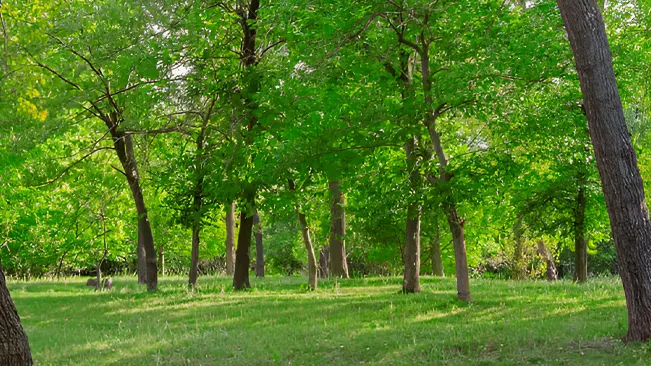
Additionally, trees release water vapor into the atmosphere, which helps to cool the air and reduce the greenhouse effect. As human activities increase the levels of greenhouse gases, afforestation and reforestation become essential strategies to combat climate change and stabilize the global climate.
2. Trees Generate Oxygen
Trees are vital for producing the oxygen that sustains life on Earth. Through photosynthesis, trees convert carbon dioxide and sunlight into oxygen and glucose, generating about 21 percent of the world’s oxygen supply. They are the second-largest source of oxygen on the planet, following phytoplankton in the oceans. When trees are removed, the balance of oxygen production is disrupted, leading to potential decreases in atmospheric oxygen levels.
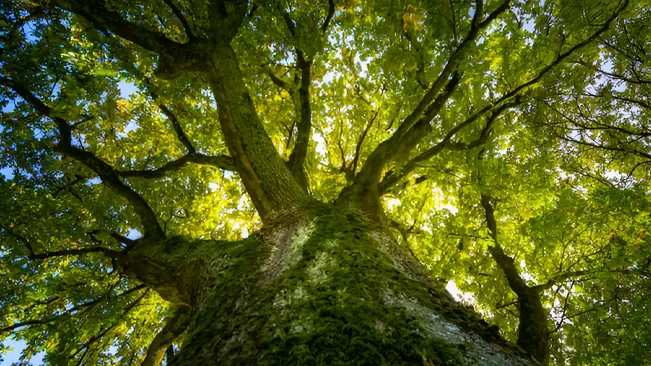
Caring for trees, whether in private gardens or public spaces, is crucial to maintaining the oxygen levels necessary for human and animal life. For those unable to tend to trees themselves, seeking out local organizations that offer tree care services can help ensure their preservation.
3. Trees Prevent Soil Erosion
Soil erosion is a significant environmental issue that trees can help prevent. The roots of trees anchor the soil, stabilizing it and reducing the likelihood of erosion. Some trees create a dense network of roots that bind the soil together, while others form a ground cover that absorbs rainwater and minimizes runoff.

This not only prevents soil from being washed away but also helps retain moisture in the soil, making it more resistant to erosion. By maintaining healthy tree cover, communities can protect their soil, which is essential for agriculture and overall ecosystem health.
4. Trees Can Reduce Air Pollution
Trees are effective natural filters for air pollution, especially in urban areas where pollution levels are high. They absorb pollutants such as sulfur dioxide, nitrogen oxides, and particulate matter from the air, which are commonly produced by vehicle emissions, industrial activities, and power plants.
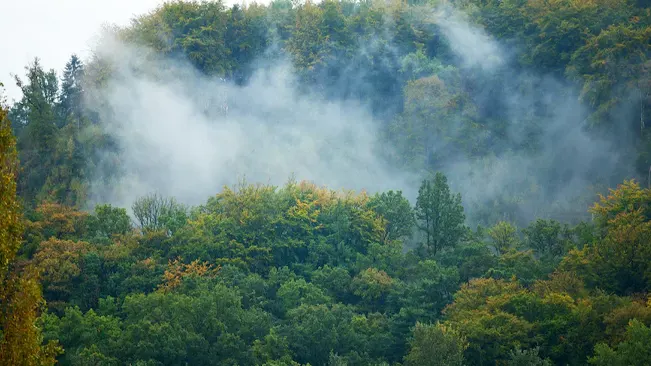
By capturing these harmful chemicals and converting them into harmless substances, trees help improve air quality and reduce respiratory problems in humans. Additionally, trees release oxygen and provide cooling shade, further contributing to a healthier urban environment.
5. Trees Improve Soil Quality
Trees enhance soil quality through several mechanisms. Their roots improve water infiltration, allowing rainwater to penetrate the soil more effectively and reducing surface runoff. As trees grow and shed leaves, they add organic matter to the soil, which enriches it and boosts its fertility.
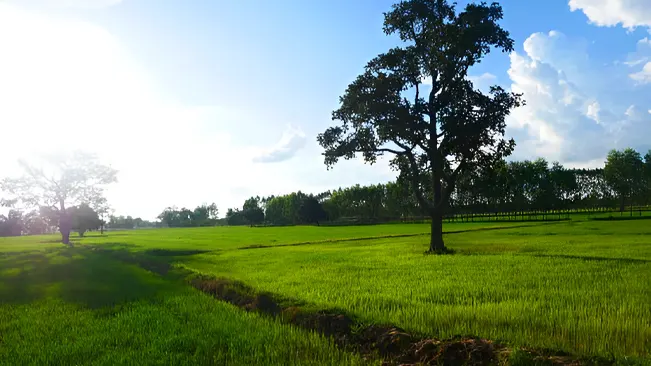
This organic matter helps in building a well-structured soil that supports plant growth. Trees also help moderate soil temperatures, creating a more stable environment for soil organisms. These combined benefits make trees essential for maintaining and improving soil health.
6. Source of Food for Wildlife
Trees are a critical food source for a variety of wildlife. They produce fruits, nuts, and seeds that are integral to the diets of many animals, including birds, mammals, and insects. In addition to supporting wildlife.
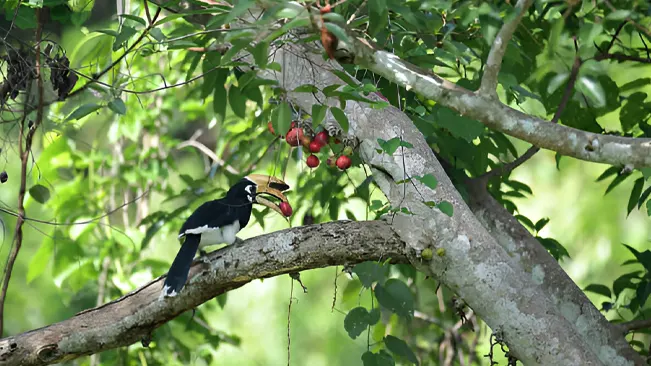
Trees also provide humans with a range of food products, such as fruits and nuts, and contribute to the economy through timber and fuel. The diverse habitats created by trees support numerous species, making them a cornerstone of healthy ecosystems and biodiversity.
7. Trees Protect Crops from the Weather
Farmers benefit greatly from the protective role trees play in agriculture. Trees act as windbreaks, reducing wind speed and protecting crops from damage caused by strong winds. They also provide shade, which can prevent crops from overheating and drying out in hot climates.

Additionally, trees help create a more humid microclimate around crops, which is beneficial for their growth. By incorporating trees into agricultural landscapes, farmers can enhance crop yields and sustainability.
8. Trees Help Regulate the Water Cycle
Trees are integral to the regulation of the water cycle. They absorb water through their roots and release it into the atmosphere through a process known as transpiration. This not only helps maintain atmospheric humidity but also influences precipitation patterns.

Trees play a role in preventing floods by absorbing excess water during heavy rains and storing it in their roots. By regulating water flow and contributing to the water cycle, trees help maintain balanced and healthy ecosystems.
9. Trees Help in Marking Seasons
Trees play a subtle yet significant role in marking the changing seasons. Deciduous trees, for example, display vibrant color changes in their leaves during autumn, signaling the approach of winter. In spring, the budding of leaves and flowers indicates the return of warmer weather.

Some trees even change the color of their fruit as it ripens, providing a natural calendar for seasonal changes. This seasonal rhythm not only adds beauty to the landscape but also helps people connect with the passage of time.
10. Trees Are Important for Human Health
Scientific research has demonstrated that spending time in natural environments, including areas with trees, can have significant health benefits. Being around trees can lower stress levels, reduce blood pressure, and decrease the risk of heart disease.

Studies also suggest that children who grow up in green environments tend to have higher IQs and better behavior. Trees provide not only physical health benefits but also psychological well-being, making them a crucial component of healthy living spaces.
Importance and Value of Trees
Trees play a crucial role in sustaining life on Earth by producing oxygen and purifying the air. They absorb carbon dioxide and release oxygen through photosynthesis, helping to mitigate air pollution and enhance the quality of the atmosphere. Beyond their environmental benefits, trees also offer medicinal resources, contributing to human health through various natural remedies. As some of the most vital organisms on our planet, trees deserve our care and respect.

It is essential for individuals and communities to actively support tree planting initiatives, nurture existing trees, and advocate against deforestation. By protecting and expanding our forests, we foster a healthier coexistence with nature, ensuring that future generations benefit from the ecological and health advantages that trees provide.
Conclusion
In conclusion, trees are essential for environmental health. They help combat global warming, produce oxygen, and improve air quality. Trees also prevent soil erosion, reduce pollution, and enhance soil quality. By supporting wildlife, protecting crops, and regulating the water cycle, trees play a critical role in maintaining ecological balance. Protecting and planting trees is vital for a sustainable and healthy future.
FAQs
- Why are trees important for the environment?
Trees are crucial for the environment because they provide oxygen, improve air quality by absorbing pollutants, prevent soil erosion, and help regulate the water cycle. They also offer habitat for wildlife and contribute to mitigating climate change by absorbing carbon dioxide. - How do trees help reduce global warming?
Trees combat global warming by absorbing carbon dioxide from the atmosphere during photosynthesis. They also release water vapor, which can help cool the air and reduce the greenhouse effect. By sequestering carbon and regulating temperature, trees play a key role in managing climate change. - What benefits do trees provide for air quality?
Trees improve air quality by absorbing pollutants such as sulfur dioxide, nitrogen oxides, and particulate matter. They also produce oxygen, which is essential for human and animal respiration, and can help reduce the overall levels of harmful chemicals in the atmosphere. - How do trees prevent soil erosion?
Trees prevent soil erosion through their root systems, which anchor the soil and reduce runoff. Their roots help stabilize the ground and prevent the loss of topsoil, while their leaf litter and ground cover absorb rainwater, further mitigating erosion. - In what ways do trees support wildlife?
Trees provide essential food and habitat for a wide variety of wildlife, including birds, insects, and mammals. They offer fruits, nuts, and leaves as food sources and create nesting sites and shelter for numerous species. - How do trees impact soil quality?
Trees enhance soil quality by improving water infiltration and retaining moisture. Their decaying leaves add organic matter to the soil, which boosts fertility and soil structure. Additionally, trees can moderate soil temperatures, creating a better environment for plant growth. - What role do trees play in regulating the water cycle?
Trees regulate the water cycle by absorbing water through their roots and releasing it into the atmosphere through transpiration. This process helps maintain atmospheric humidity and precipitation patterns, and trees can also reduce the risk of flooding by absorbing excess water. - How can individuals help protect and support trees?
Individuals can help protect and support trees by planting new trees, caring for existing ones, and advocating against deforestation. Participating in local tree-planting initiatives, supporting conservation organizations, and reducing activities that harm forests are effective ways to contribute. - What are the health benefits of spending time around trees?
Spending time around trees and in natural environments has been shown to reduce stress, lower blood pressure, and improve mental well-being. Being in green spaces can also enhance overall physical health, promote relaxation, and improve mood. - Why should we be concerned about deforestation?
Deforestation poses a significant threat to the environment by reducing biodiversity, disrupting ecosystems, and increasing carbon dioxide levels in the atmosphere. It also exacerbates climate change, contributes to soil erosion, and impacts the availability of resources like clean air and water.

Joel Cunningham
Forestry AuthorI'm Joel Cunningham, an expert in pruning and weed management with over a decade of experience. My skills are rooted in formal training and extensive practice, focusing on advanced pruning techniques and efficient weed control. I'm known for my quality work, precision, and deep understanding of plant health and soil dynamics. My contributions extend to educational initiatives where I share sustainable practices and advice, establishing myself as a reliable and authoritative figure in the gardening community.








Leave your comment